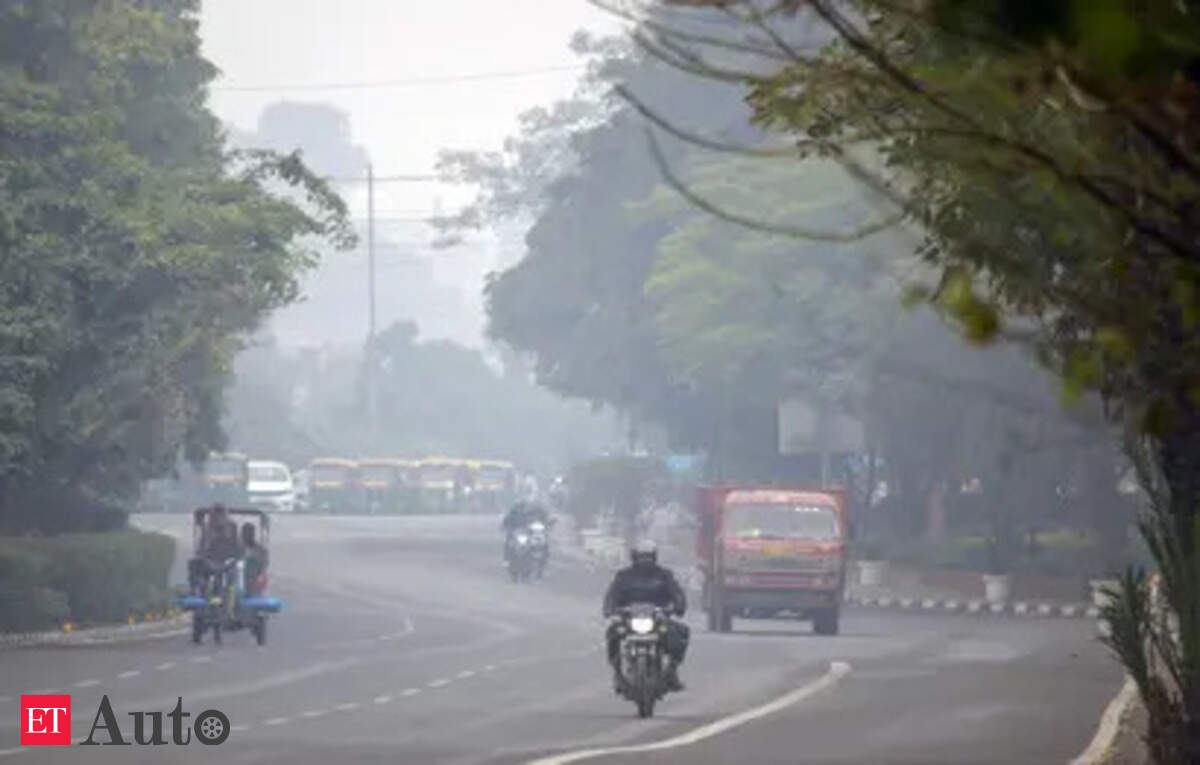Environmental Concerns: Kathmandu's Air Pollution and Global Greenhouse Gas Fee Agreement

Kathmandu, Nepal – For days, a dense, toxic haze of dust and smoke has enveloped Kathmandu, casting an eerie red glow on the sun and shrouding the Himalayan nation's capital in a hazardous smog. Famous for its towering mountains, including Mount Everest, Nepal finds its capital city trapped in a valley, starved of rainfall for the past six months. This prolonged dry spell, coupled with widespread forest fires in the surrounding regions, particularly to the south and east, has triggered a dramatic spike in air pollution levels. The situation is further exacerbated by vehicle emissions and the city's unique topography, which traps stagnant air.
Bidhya Banmali Pradhan, an air pollution specialist at the International Center for Integrated Mountain Development (ICIMOD), explains the geographical disadvantage: "Kathmandu Valley is shaped like a bowl. When there is no rainfall, pollutants remain suspended in the air without settling, and there is little wind movement. As a result, pollution accumulates in the valley. Unlike the plains, it takes longer here for polluted air to clear." ICIMOD, a regional body comprising Nepal, India, China, and Pakistan, has recently reported rising carbon monoxide levels in Kathmandu's air, posing a significant threat to human health. The poor visibility has repeatedly disrupted flights at Kathmandu’s Tribhuvan International Airport, further isolating the city.
Currently, Kathmandu holds the unenviable title of the world's most polluted city, according to IQ Air, a Swiss-based platform that aggregates air pollution data from various sources, including governments, companies, and NGOs. IQ Air's Air Quality Index (AQI) categorizes pollution levels, with 0-50 considered good, 51-100 moderate, 101-150 unhealthy for sensitive groups, 151-200 unhealthy, 201-300 very unhealthy, and anything above 301 deemed hazardous. Last Thursday, Kathmandu's average AQI reached a staggering 348, with some areas exceeding 400. Since then, the city has consistently remained at the top of global pollution rankings, with AQI levels consistently above 200.
However, Nepal's air pollution crisis extends beyond its capital. AQI data reveals that many regions in the south and east are also experiencing unhealthy air quality. Hasana Shrestha, an environmental inspector at the Department of Environment (DoE), points to the primary culprit: "The primary cause of the recent rise in air pollution is forest fires. These fires are not limited to Nepal — they are also occurring in India and Southeast Asia, and the impact is reaching us." Shrestha further notes that emissions from vehicles, industries, brick kilns, open waste burning, and construction site dust are compounding the problem.
Indeed, cities neighboring Nepal, such as New Delhi, Kolkata, Dhaka, Lahore, and Yangon, frequently appear among the world's most polluted. Air pollution expert Pradhan highlights the seasonal variations in the sources of pollution: "During November–December, pollution mainly comes from sources across the border, particularly crop burning in Indian states of Punjab and Haryana. From March to May, most pollutants are domestic, with forest fires playing a major role. Dry conditions turn forests into tinderboxes, triggering widespread fires. This eases once the monsoon begins in June." Pradhan also notes that current PM 2.5 levels – dangerous airborne particles small enough to enter the lungs – have soared to over 200 micrograms per cubic meter, far exceeding safe limits.
Health authorities are urgently advising vulnerable groups to take precautions. A recent State of Global Air report indicated that air pollution was directly linked to 125 deaths in Nepal in 2021 and contributed to a total of 48,500 fatalities, remaining a leading cause of serious health conditions like stroke and heart disease. In response to the escalating crisis, the Nepalese government has issued public warnings urging residents to stay indoors, and some schools have been temporarily closed. Hospitals are reportedly overcrowded, with patients suffering from eye irritation, respiratory problems, throat infections, and skin conditions. Prakash Budhathoki, a spokesperson for the health ministry, emphasizes that "vulnerable groups — including children, the elderly, pregnant women, and those with chronic illnesses — must take extra precautions."
Acknowledging the severity of the situation, the government admits that its efforts to control forest fires are insufficient, citing a lack of advanced equipment and adequate personnel. Minister for Forests and Environment Ain Bahadur Shahi Thakuri stated at a public event that "all state mechanisms are involved in fire management, but government efforts alone are not enough. Collaboration is crucial — from civil society to local communities and youth."
Meanwhile, NGOs like the Broad Citizens' Movement are calling for immediate action, criticizing the government's perceived lack of proactivity. The group has urged the temporary shutdown of highly polluting factories and the limitation of car traffic. Environmental inspector Shrestha echoes these concerns, stating, "We talk more than we act. We need at least one lead authority to take real, coordinated action."
Experts like Shrestha and Pradhan emphasize the need for both immediate and long-term strategies to curb the rising pollution, particularly in the Kathmandu Valley. Shrestha suggests relocating brick kilns outside the valley, enforcing stricter vehicle emissions standards, regularly monitoring industries, and ensuring inter-agency coordination. Pradhan highlights the importance of international cooperation, stating that "South Asian countries — including India, Bangladesh, and Pakistan — must adopt an integrated air pollution policy and enforce it strictly. Having policies on paper is not enough. We need implementation — through incentives for cleaner practices, gradual replacement of polluting industries, and consistent monitoring." The crisis underscores the urgent need for concerted action to protect public health and mitigate the devastating effects of air pollution in Nepal and the wider South Asian region.









